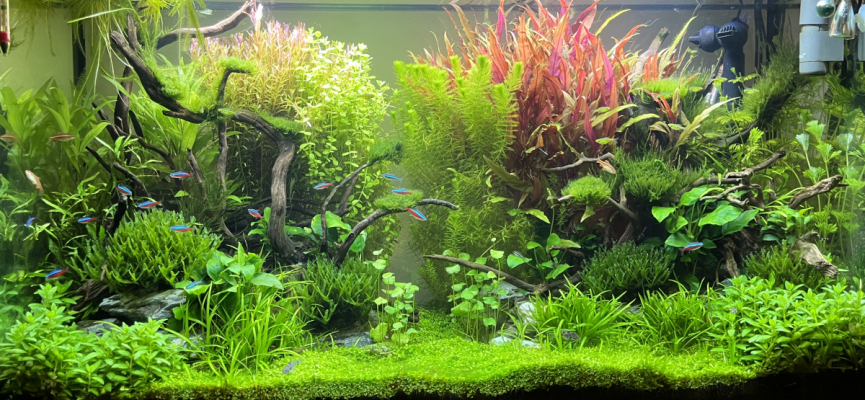Hi all, my first ever post and I am completely new to reefing. I have successfully been keeping freshwater (see pic below) for a year after having dropped the hobby a few years ago and have always longed for a reef tank.
I’m considering buy a Redsea 750xxl second hand, from someone who has fallen out of love with the hobby. It comes fully kitted out and has a LOT of live rock etc with it, however it really needs tearing down, stripping out, deep cleaning and starting from scratch (it is in a bit of a state).
There is a clown and a small regal tang in the near abandoned tank, and my priority is to get them into a hospital tank which I will pre-setup at home and get cycled (thinking around 30 gallons) where they can stay until the main tank has been re-established and cycled.
I would massively appreciate some input on the following questions.
Am I right in assuming that keeping the large amount of bio-media from the sump, in addition to the immediate addition of all of the live rock once the tank has been cleaned, significantly reduce the time of cycling? I am aware that it’s going to come down to simply testing until parameters are stable and the rest of the surfaces in the tank have established beneficial bacteria.
The reason behind my questioning is concern for the livestock as I don’t want to stress a tang for too many weeks in a small tank.
I am used to diligent maintenance, and do 60% weekly water changes on my current freshwater (never missed one) and have been through the motions of diatoms, cyano, hair algae etc. and know what to expect (I do understand that reefing is a different ballgame) but I feel that I have the discipline to give myself a good chance of success. I have also been digesting 100’s of hours of literature, videos, threads on here and long chats with LFS in preparation.
I would welcome any input, as it will be stripping the tank and kit back to bare (bio-media and live rock aside) with some repairs needed on the main return pump, one of the lighting units and I have an electrician friend ready to pitch in

I’m considering buy a Redsea 750xxl second hand, from someone who has fallen out of love with the hobby. It comes fully kitted out and has a LOT of live rock etc with it, however it really needs tearing down, stripping out, deep cleaning and starting from scratch (it is in a bit of a state).
There is a clown and a small regal tang in the near abandoned tank, and my priority is to get them into a hospital tank which I will pre-setup at home and get cycled (thinking around 30 gallons) where they can stay until the main tank has been re-established and cycled.
I would massively appreciate some input on the following questions.
Am I right in assuming that keeping the large amount of bio-media from the sump, in addition to the immediate addition of all of the live rock once the tank has been cleaned, significantly reduce the time of cycling? I am aware that it’s going to come down to simply testing until parameters are stable and the rest of the surfaces in the tank have established beneficial bacteria.
The reason behind my questioning is concern for the livestock as I don’t want to stress a tang for too many weeks in a small tank.
I am used to diligent maintenance, and do 60% weekly water changes on my current freshwater (never missed one) and have been through the motions of diatoms, cyano, hair algae etc. and know what to expect (I do understand that reefing is a different ballgame) but I feel that I have the discipline to give myself a good chance of success. I have also been digesting 100’s of hours of literature, videos, threads on here and long chats with LFS in preparation.
I would welcome any input, as it will be stripping the tank and kit back to bare (bio-media and live rock aside) with some repairs needed on the main return pump, one of the lighting units and I have an electrician friend ready to pitch in



















